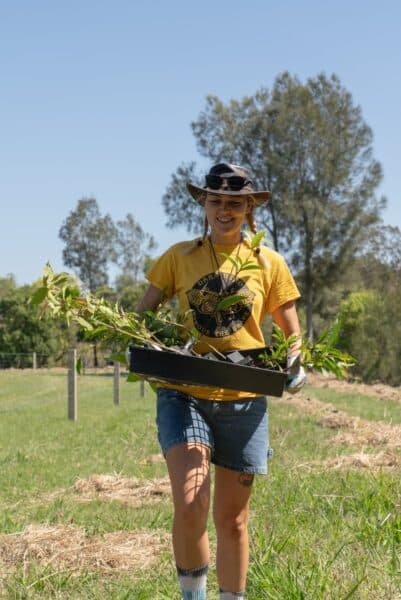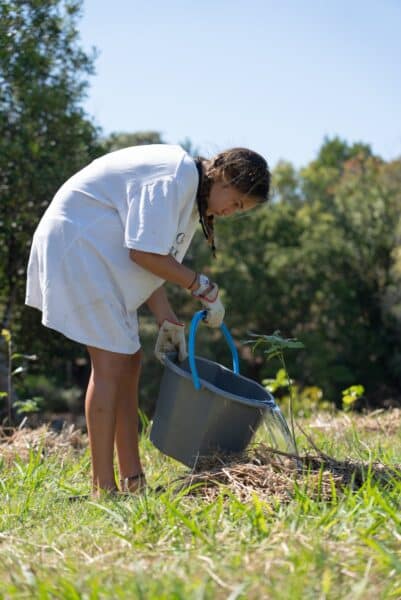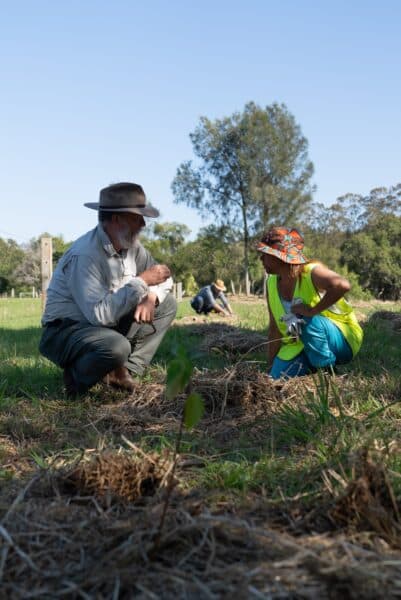Reviving Northern NSW’s Riparian Vegetation: 700 Native Trees Established!
Brunswick River Restoration Site, Mullumbimby. Photograph Patchworks Productions
We are proud to share that our ‘Rewilding our Floodplains’ program in Northern NSW, Australia, is planting seeds to restoration success!
We recently hosted a community tree planting day with Brunswick Valley Landcare and our wonderful volunteers to establish 700 carefully selected riparian plant species supplied by Northern Rivers Natives.
Riparian vegetation grows next to a waterway, including creeks and wetlands, in fresh or salty water. Healthy riparian vegetation is critically important for healthy waterways, filtering water, binding soil, providing shade, food and habitat for native species and connecting habitat corridors.
The key to successful riparian restoration lies in thoughtful species selection, influenced by factors such as local climate, soil type, and desired outcomes. In this blog, we’ll explore the significance of riparian vegetation and the meticulous process behind our tree-planting efforts.
What species did we plant where and why?
Brunswick River Restoration Site 3 Planting Zones
Positive Change for Marine Life and volunteers planted a mix of native riparian species chosen to enhance riverbank stability, improve water quality and enhance resilience to the impacts of climate change. The plants chosen exist locally and are known to adapt well to the conditions. We planted different plants in three key zones, moving from the toe (edge of the riverbank) to the middle bank and upper bank:
The ‘Toe’ Zone:
This is the sloping edge of the bank, prone to flooding. Low-growing, multi-trunked plants, sedges and rushes with matted roots to bind the toe. Best species for erosion control and can withstand inundation and fast-flowing water.
Species Planted: Grey Mangrove, Swamp Oak, Spiny Mat Rush, River Lilley and two species of Lomandra’s.
Middle bank zone
The topmost face of the bank, higher ground, but may partially flood every couple of years. Use plant species that can tolerate having damp feet. Medium-sized plants with good root systems and large canopies that shade the stream.
Species Planted: Creek Lilly Pilly, Blue Flax Lily, Sandpaper Fig, Cheese Tree
Upper bank zone
The flat or mostly level section. It may partially flood every couple of years. Plant species that prefer dry conditions. Trees with deep root systems.
Species Planted: Hoop Pine, Forest Red Gum, Small-leaved Fig.
Lomandra – Toe Zone of the Bank
Elaeocarpus grandis (Blue Quandong) – Middle Bank
Ficus watkinsiana: (Strangler Fig) – Upper Bank
What are the next steps for the restoration site?
We are working with a range of project partners and volunteers to monitor the restoration site for the next five years to check the progress of the mangrove and riparian tree growth and monitor invasive species vs. native vegetation.
We are pleased to report that with the recent heat and dry temperatures, the plants are doing really well with all trees surviving and in great heatlh.
Community Members at Tree Planting Day. Photograph Patchworks Productions
Community at the root of restoration success
This community tree planting day was another positive step forward in reaching our program goal to protect wetlands, enhance river resilience, and foster greater community connection to river systems.
Thank you to everyone who helped make the community tree planting day possible, from local businesses, Aboriginal Traditional Custodians of the Byron Bay district, landcare groups, volunteers and passionate community members. We couldn’t done this without you!
If you know of an area of riverbank in brackish or estuarine water that would benefit from riparian restoration, please contact Lauren Morgan.
“It was incredible to see the community working together to plant 700 trees at our restoration project. Despite the heat, we had a great turnout, and many enthusiastic hands made quick work of the planting effort. A warm thanks to all our volunteers and project partners for making the day a success”
– Lauren Morgan Wetlands and Costal Programs Coordinator, Northern NSW.
Photograph Patchworks Productions
Photograph Patchworks Productions
Acknowledgements
Thanks to our major funders Ubuntu, Northern Rivers Community Foundation, Foundation for Rural & Regional Renewal and Southern Cross Credit Union, for supporting our restoration program in Northern NSW.
Our Healthy Rivers and Wild Wetlands Citizen Science Projects are being delivered through the NSW Environment Protection Authority’s Flood Recovery Program for Water Quality Monitoring, in partnership with the NSW Department of Planning and Environment and supported by the Riparian Stabilisation Package. The Riparian Stabilisation Package is co-funded by the Australian and NSW Governments under Disaster Recovery Funding Arrangements.
Our project has also been supported and enhanced and supported by various project partners, including NSW Department of Primary Industries, Arakwal Cooperation, Byron Shire Council, Brunswick Valley Landcare, Wildbnb Wildlife Habitat, North Coast Local Land Services. Thanks to Northern Rivers Natives for supplying the beautiful plants, and to the hard-working team from Wanganui Green Bush Regeneration and our landholder for preparing the site for restoration.
We would like to acknowledge the Arakwal people of the Bundjalung Nation, who are the Traditional Custodians of this land on which we live, work, and stand. Arakwal People retain a strong connection to Country; actively caring for flora and fauna and land and waters. We ask that you respect and help look after Country and Culture. We also acknowledge and pay our respect to Elders, both past and present, and the extended Aboriginal community.


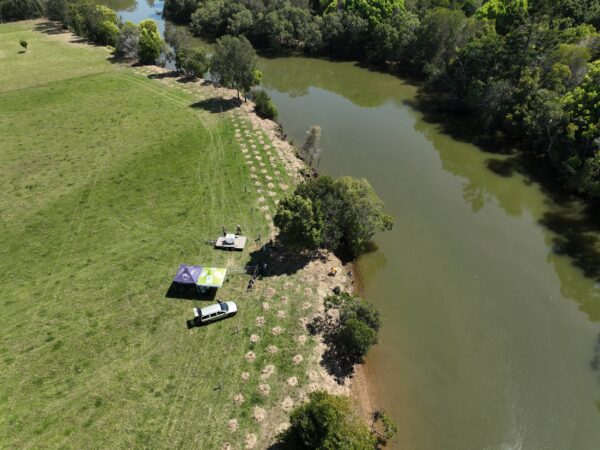
default
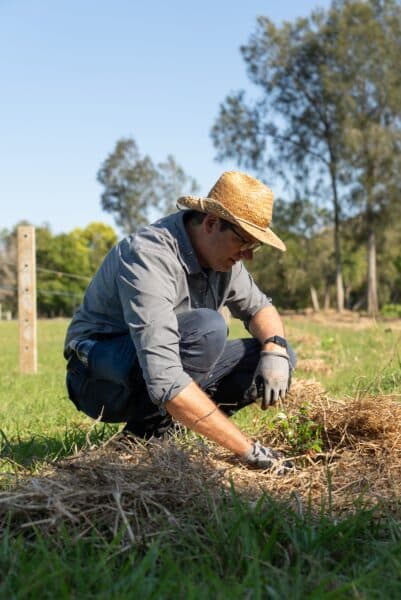
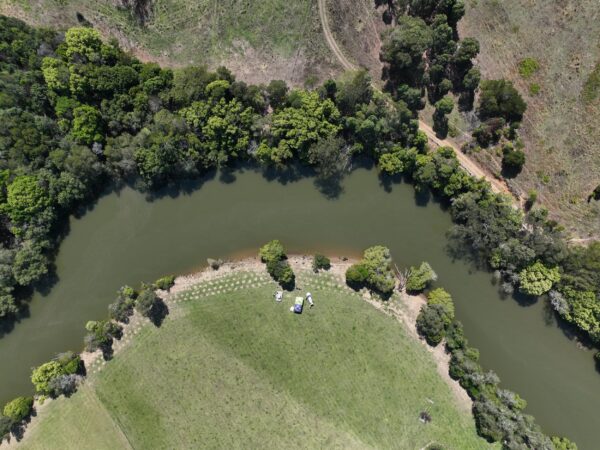
Rewilding Our Floodplains. Brunswick River tree planting
